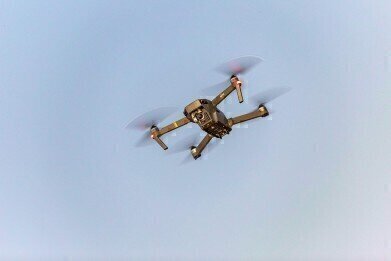Environmental laboratory
Italian Conference Showcases Drone Air Monitoring Abilities
Mar 04 2016
Last month, the latest instalment of the Roma Drone Conference 2015-16 series took place in Rome on January 20th. The convention, titled ‘Drones and Remote Sensing’, took as one of its central themes the potential environmental contribution drones could make to our understanding of the state of the Earth by providing more detailed and accurate overviews of air pollution in hard-to-reach areas.
A Timely Topic
Air pollution in Italy has come to the forefront of national consciousness at the beginning of the year due to elevated levels of particulate matter 2.5 (PM2.5) across several cities around the country. The capital of Rome, as well as Napoli and Milan, all reported levels of PM2.5 well above legal limits.
As such, the conference represented a perfect opportunity to showcase the drone’s abilities to increase knowledge about air quality levels across Italy and indeed further afield. Due to their unique portability, drones can reach previously inaccessible sites, such factory and industrial plant chimneys. They can also provide data on undesirable locales, such as rubbish dumps, landfill sites and quarries, giving authorities a more comprehensive overview of how such places affect the local air quality.
The drones could be used in conjunction with traditional monitoring techniques, which range from fixed governmental monitoring stations, to mobile vehicular units, to an increasingly popular crowdsourced method whereby ordinary citizens carry monitoring equipment and provide real-time analysis.
Drones to the Rescue
Since their arrival on the scene in the past decade, drones have gained something of a bad reputation, largely due to their involvement with military operations. However, applications such as those on show in Rome demonstrate that such AI can be used beneficially to monitor our environment, rather than jeopardise it.
For example, they can prove invaluable in gathering data about hard-to-reach places in inhospitable conditions. In Siberia, Russian scientists are using thermal imaging equipment mounted on drone units to monitor temperatures in the permafrost there. Permafrost is defined as land which has endured temperatures of below 0°C for more than two years, and affects parts of the globe as diverse as Russia, Canada, China and Greenland. Since such conditions are not inhabitable to humans and can represent potentially deadly challenges in gathering information, drones can provide a reliable alternative to manual missions.
Meanwhile, scientists at Nottingham Trent University in the UK are investigating how infrared drones can be used to detect underground water leaks in thousands of miles of piping. Such analysis would clearly prove to be not only troublesome but also incredibly time-consuming if undertaken manually. With the freedom and technology afforded by drones, arduous tasks such as these can be reduced to mere Child’s play.
As such, it’s clear drones aren’t all bad. Indeed, when used in the right manner, they can provide invaluable insight and essential assistance in monitoring and cleaning up our environment and safeguarding our most precious resources.
Digital Edition
AET 28.4 Oct/Nov 2024
November 2024
Gas Detection - Go from lagging to leading: why investment in gas detection makes sense Air Monitoring - Swirl and vortex meters will aid green hydrogen production - Beyond the Stack: Emi...
View all digital editions
Events
Jan 12 2025 Abu Dhabi, UAE
Jan 14 2025 Abu Dhabi, UAE
Jan 20 2025 San Diego, CA, USA
Carrefour des Gestions Locales de L'eau
Jan 22 2025 Rennes, France
Safety, Health & Wellbeing LIVE
Jan 22 2025 Manchester, UK



















